|
Picture 1 |
Picture 2 |
Picture 3 |
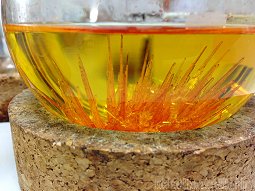 |
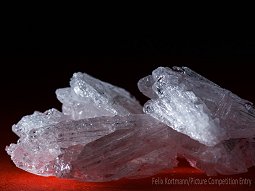 |
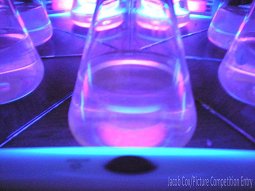 |
|
Picture by Isabel Köhl |
Picture by Felix Kortmann
|
Picture by Jacob Cox
|
|
Picture 4 |
Picture 5 |
Picture 6 |
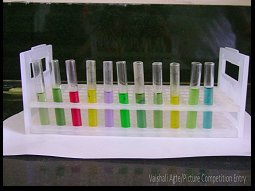 |
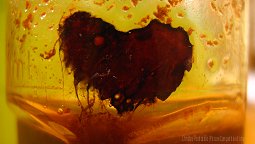 |
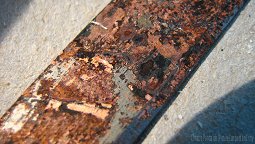 |
|
Picture by Vaishali Agte |
Picture by Christos Pantazidis |
Picture by Christos Pantazidis |
|
Picture 7 |
Picture 8 |
Picture 9 |
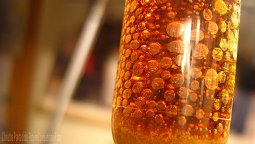 |
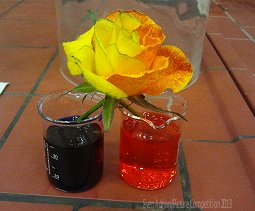 |
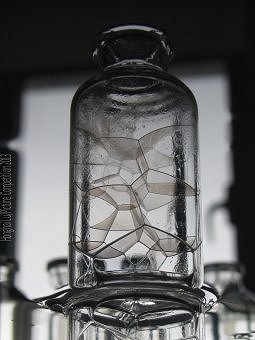 |
|
Picture by Christos Pantazidis |
Picture by Sven Adrian “White” rose colored using blue and red ink. |
Picture by Honghai Liu This beautiful structure of foam was found while cleaning chemical apparatus. |
|
Picture 10 |
Picture 11 |
Picture 12 |
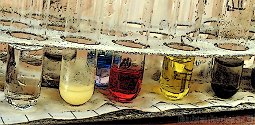 |
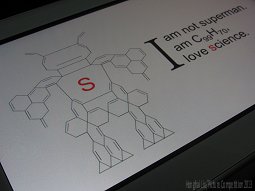 |
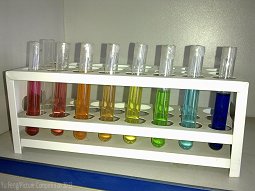 |
|
Picture by Christos Pantazidis Colors! Different colors, textures, and odors! What more could a chemist possibly ask for? |
Picture by Honghai Liu The fun of chemical construction – we can play with it like Lego blocks. |
Picture by Yu Feng Chromatic chemical life. |
|
Picture 13 |
Picture 14 |
Picture 15 |
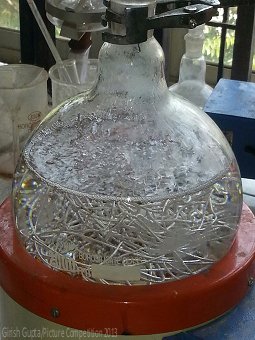 |
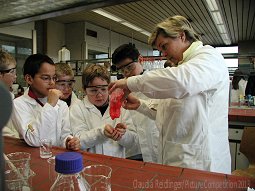 |
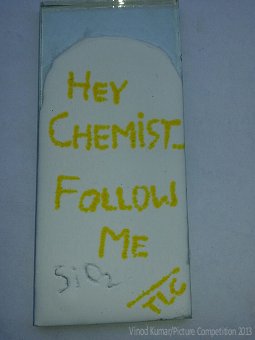 |
|
Picture by Girish Gupta Drying of benzene using sodium wire |
Picture by Claudia Reidlinger Making slime! |
Picture by Vinod Kumar Without TLC an organic chemist is blind. |
|
Picture 16 |
Picture 17 |
Picture 18 |
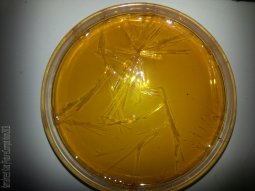 |
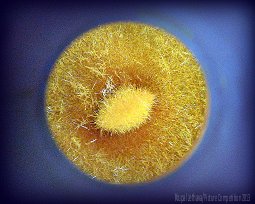 |
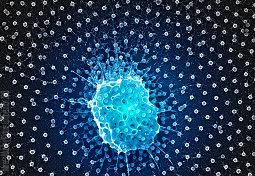 |
|
Picture by Kamalneet Kaur |
Picture by Krupal Jethava The Beauty of Crystallization. The next day I said, Wow! The synthesized compound had formed artistic crystals around the oval-shaped magnetic stirrer bar. Amazing!
|
Picture by Mareen Müller Colloidal Concourse. Scanning electron microscope image of silica-core/poly(n-isopropylacrylamid)-shell particles. The surface structuring was obtained by particle transfer using micro contact printing stamps with circular depressions. Afterwards the substrate was exposed to oxygen plasma to remove the soft polymer shell. |
|
Picture 19 |
Picture 20 |
Picture 21 |
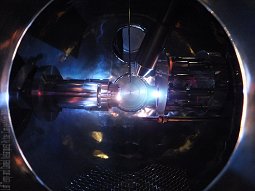 |
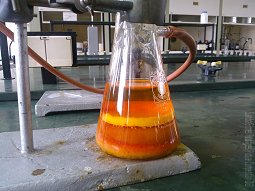 |
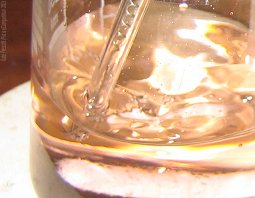 |
|
Picture by Jeff Terry and Daniel Velazquez Thin Film Synthesis with Pulsed Laser Deposition. Two lasers are used to deposit thin films on substrates. A CO2 laser impinges on the substrate on the left causing the substrate to emit blackbody radiation. A 266 nm pulse hits a target and creates the visible plume on the right. Chemistry under ultra-high vacuum conditions. |
Picture by Sandra Gomes Rodrigues Filtration of a school day. The beauty of the impurities. |
Picture by Kate Prescott BZ Oscillating Reaction. A photo of the color transition shown in the BZ oscillating reaction. The color changes between colourless and a light |
|
Picture 22 |
Picture 23 |
Picture 24 |
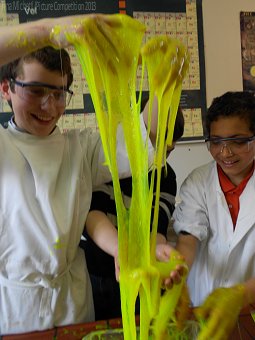 |
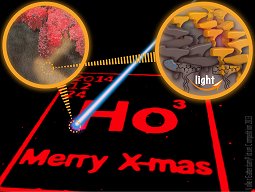 |
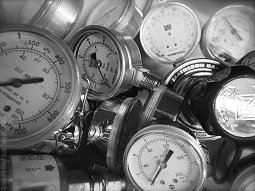 |
|
Picture by Tina Michetti SLIME!
|
Picture by Volker Gatterdam Light-triggered protein assembly. Shown is a modified microscope image of a glass surface functionalized with photoactivatable (“caged”) glutathione. During light irradiation inactive glutathione is photoconverted into its biological relevant form, which can be recognized by the red fluorescent labeled protein glutathione-S-transferase (GST). Total width of this image is 100 µm. |
Picture by Cornelia Flender Pressure is on!
|
|
Picture 25 |
Picture 26 |
Picture 27 |
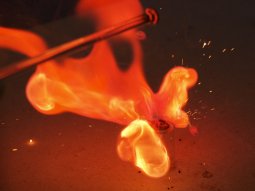 |
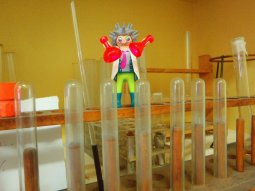 |
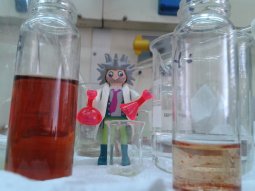 |
|
Picture by Martin M. Hiller and Raphael Stolina 670.8 nm Water drops falling down on lithium dendrites. The rest is chemistry. |
Picture by Konstantina Kipreou Chemistry rocks! |
Picture by Konstantina Kipreou A little professor is already on duty. |
|
Picture 28 |
Picture 29 |
Picture 30 |
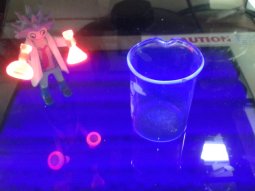 |
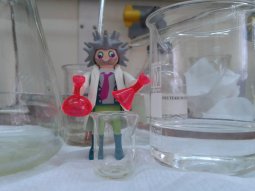 |
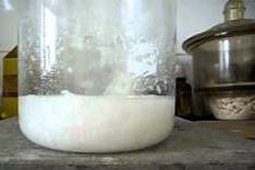 |
|
Picture by Konstantina Kipreou |
Picture by Konstantina Kipreou A ΄΄little΄΄ help is always welcome during the experiment. |
Picture by Haresh Ajani Crystallization of Tramadol hydrochloride The molecular weight of tramadol hydrochloride is 299.8. It is a white, bitter, crystalline and odorless powder. It is readily soluble in water and ethanol and has a pKa of 9.41. The n-octanol/water log partition coefficient (logP) is 1.35 at pH 7. |
|
Picture 31 |
Picture 32 |
Picture 33 |
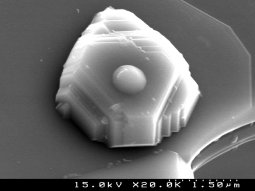 |
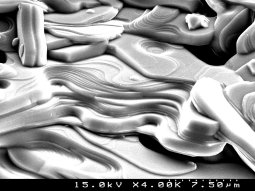 |
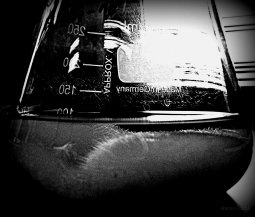 |
|
Picture by Robert Pullar SEM image of hexagonal ferrite crystal, showing growth on hexagonal edges, and a new layer beginning to grow by seemingly liquid phase growth on the surface.
|
Picture by Robert Pullar The ferrite Badlands – stacking of crystal layers High contrast SEM image of the many layers of growth seen in a hexagonal ferrite crystal, like a landscape of eroded mountain features, but on a micron scale. |
Picture by Marisa Rocha Approx |
|
Picture 34 |
Picture 35 |
Picture 36 |
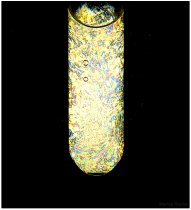 |
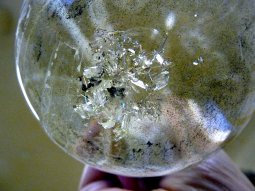 |
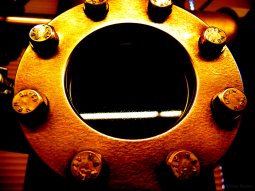 |
|
Picture by Marisa Rocha Liquid Crystal |
Picture by Marisa Rocha Quinquephenyl Crystals |
Picture by Marisa Rocha Sapphire Window |
|
Picture 37 |
Picture 38 |
Picture 39 |
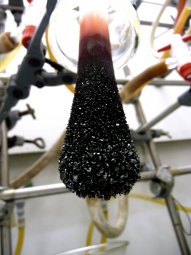 |
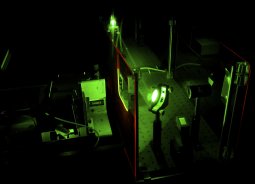 |
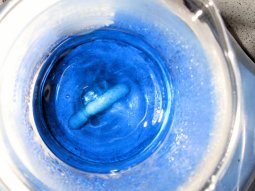 |
|
Picture by Marisa Rocha Sublimation
|
Picture by Ben Boeser Beam me up! |
Picture by Nils Böckenfeld |
|
Picture 40 |
Picture 41 |
Picture 42 |
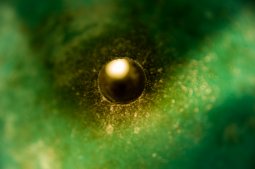 |
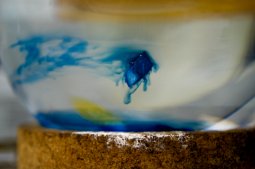 |
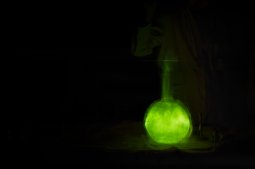 |
|
Picture by Denise Schneider |
Picture by Denise Schneider The Brownian motion in connection with a redox reaction A piece of sodium in water together with an indicator. |
Picture by Denise Schneider Fascinating Fluorescence! Shot during an experimental lecture. |
|
Picture 43 |
Picture 44 |
Picture 45 |
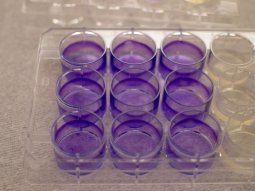 |
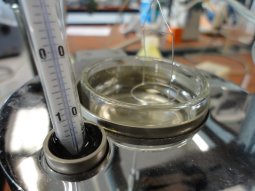 |
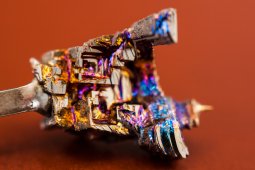 |
|
Picture by Minxi Rao Silicibacter grown in 12-well plates; biofilms stained by crystal violet. |
Picture by Sabrina Schott Platinum ring and thermometer of a Du-Noüy-Ring-Tensiometer, which is used to measure the surface tension of liquids. |
Picture by Peter Heinrichs A small Bismuth crystal we crystallized in lab. |
|
Picture 46 |
Picture 47 |
Picture 48 |
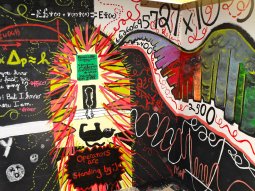 |
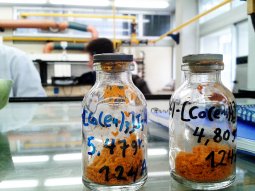 |
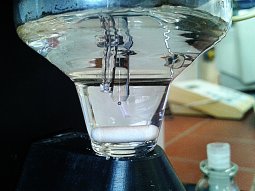 |
|
Picture by Marisa Sanders Students at The College of New Jersey painted a Quantum Tunnel in the basement of the chemistry building during the college’s summer research program. |
Picture by Konstantina Dodi Iokasti As you can see, we are making beautiful complexes at the laboratory! |
Picture by Konstantina Dodi Iokasti Beautifully Dangerous Hg is very dangerous but look at it – eventually, everything has it’s magic! |
|
Picture 49 |
Picture 50 |
Picture 51 |
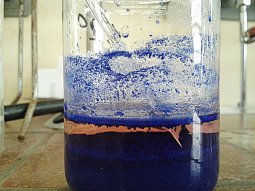 |
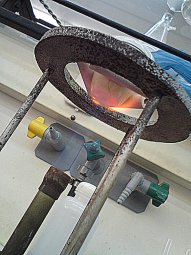 |
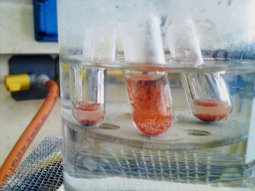 |
|
Picture by Konstantina Dodi Iokasti |
Picture by Konstantina Dodi Iokasti Bunsen Burner |
Picture by Konstantina Dodi Iokasti Analytical Chemistry That’s why we love Analytical Chemistry. Orange little things bubbling around! |